Abstract
In view of the increasing number of reports from different parts of the world indicating resistance to DDT in both adults and larvae of Anopheles stephensi, an important malaria vector, a series of laboratory studies has been carried out on the degree, the pattern and the mode of inheritance of resistance in this species. A DDT-resistant strain from Iraq and a susceptible strain from India were used.
In four sets of observations made in the course of tests on both adults and larvae a monofactorial type of inheritance was indicated, and the factor involved was shown to be dependent for its expression on the genetic background.
DDT-resistance in A. stephensi appears to be similar in most respects to that in A. sundaicus.
Full text
PDF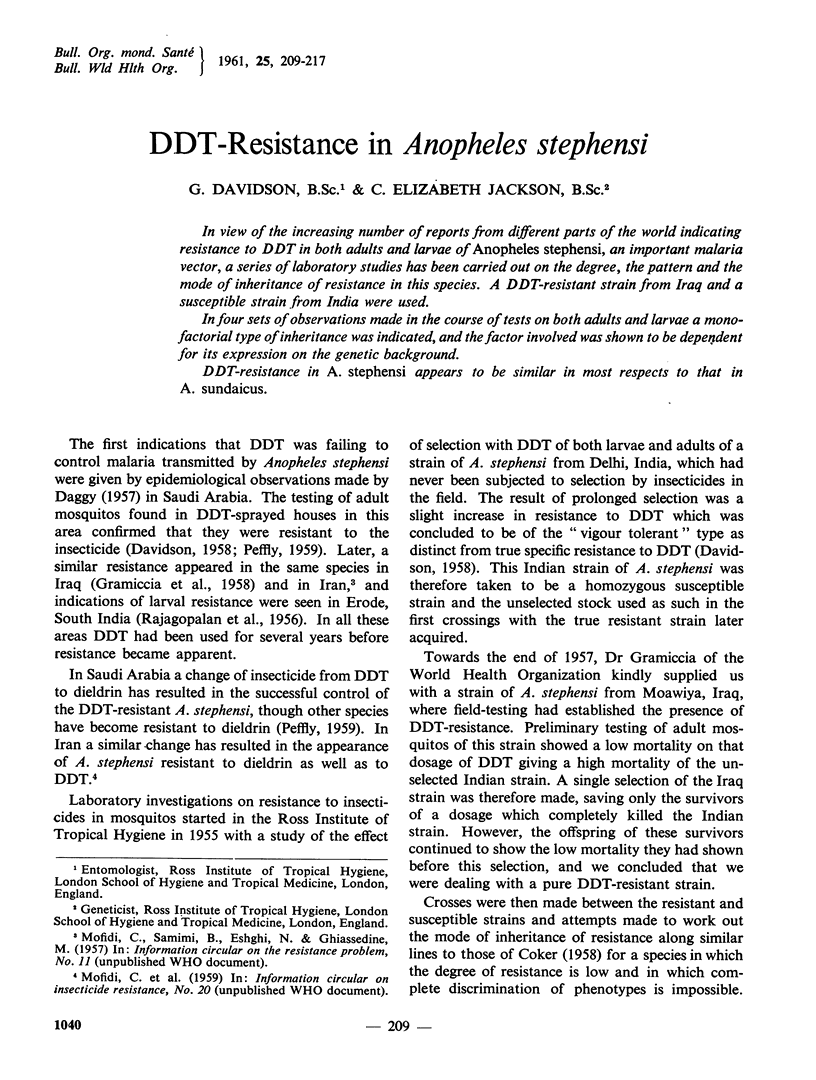
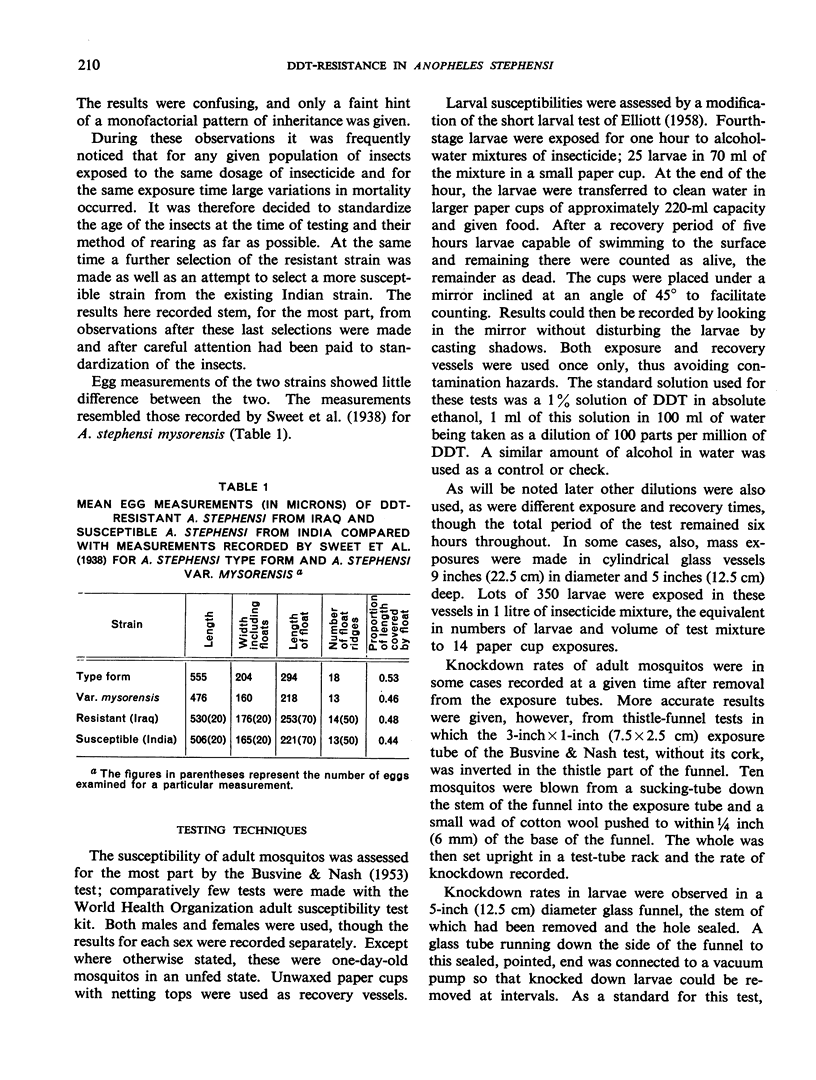
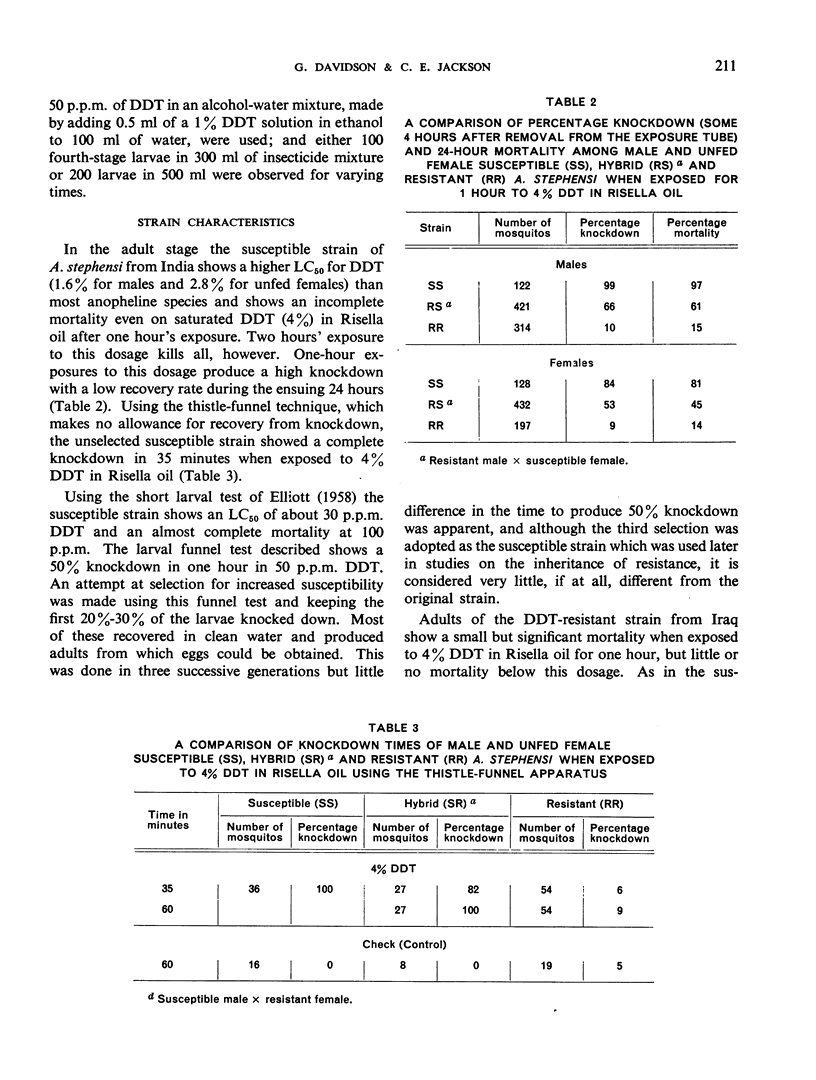
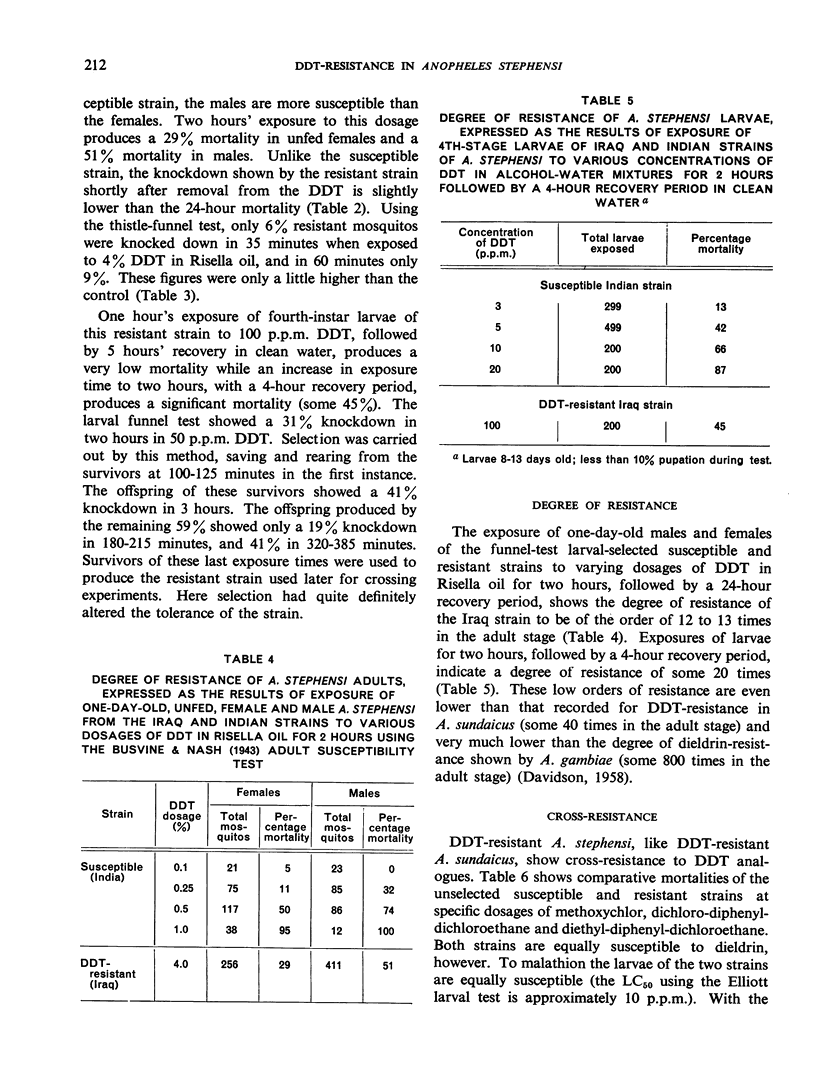
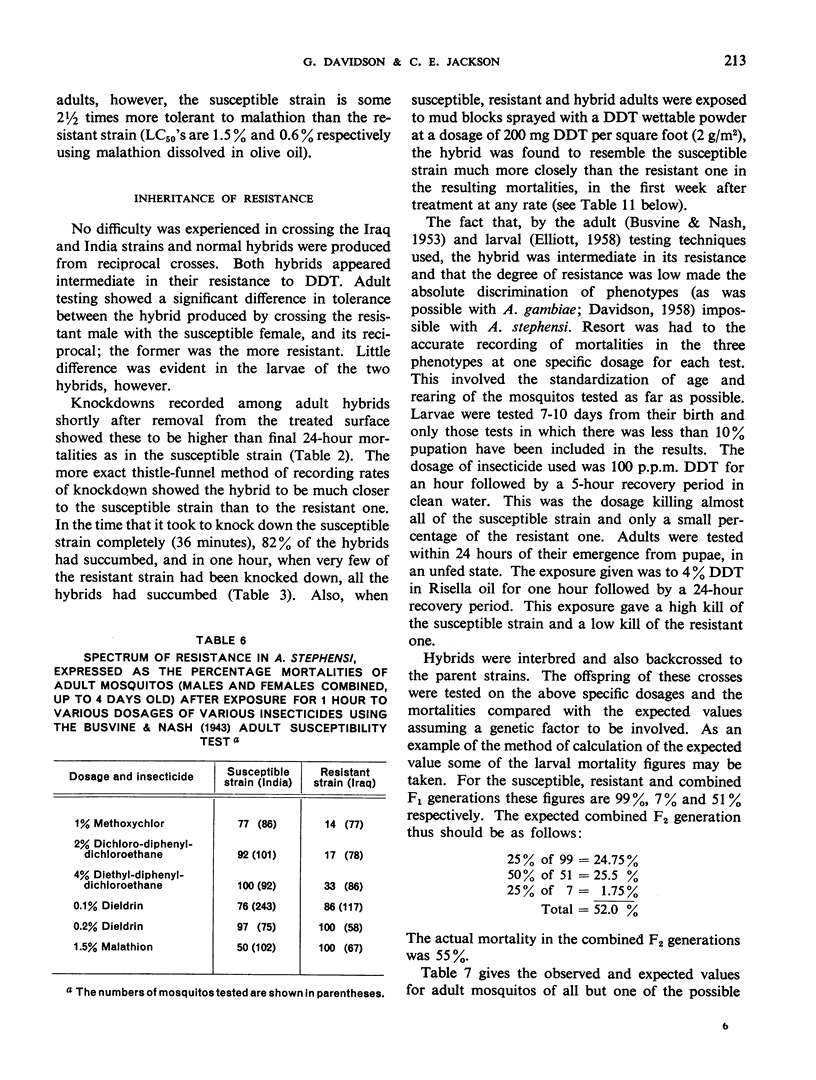
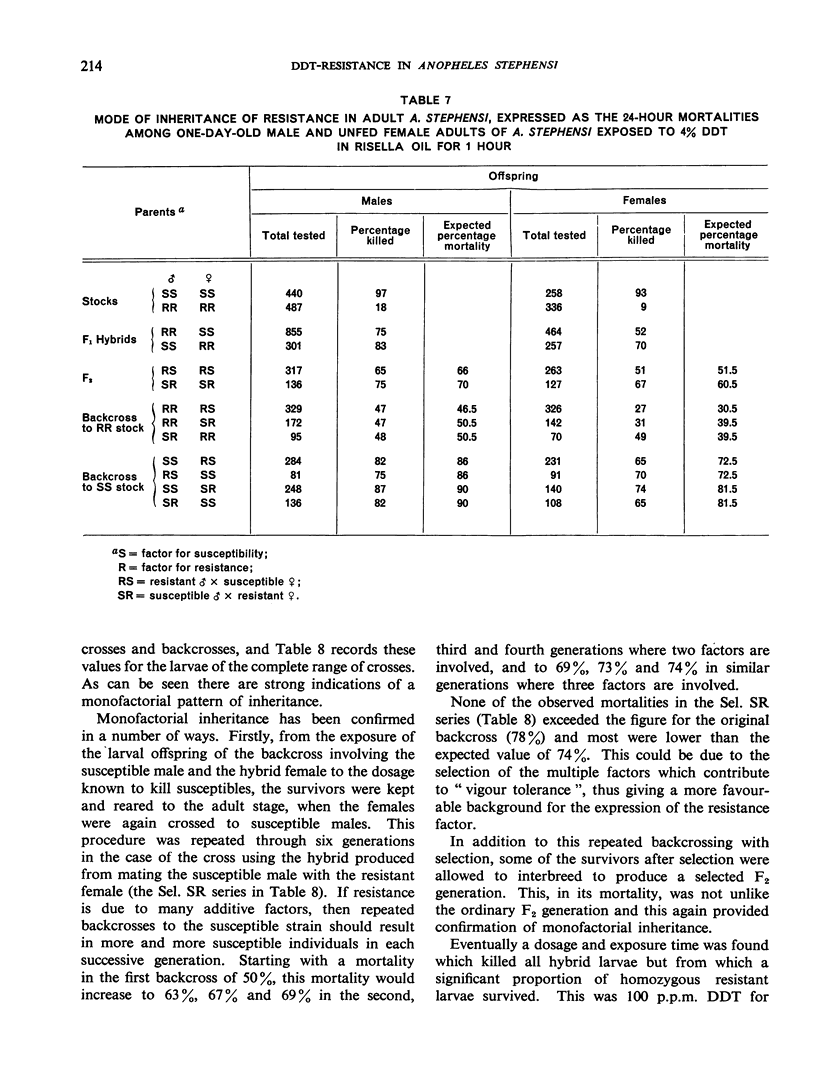
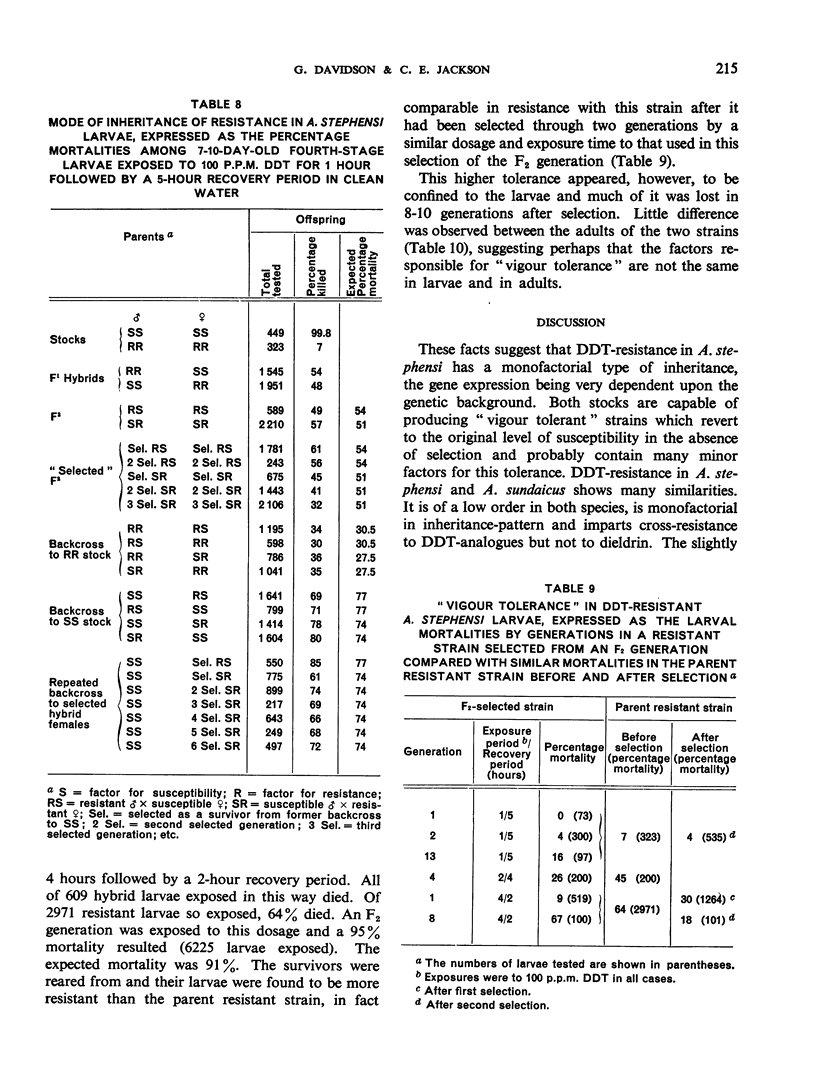
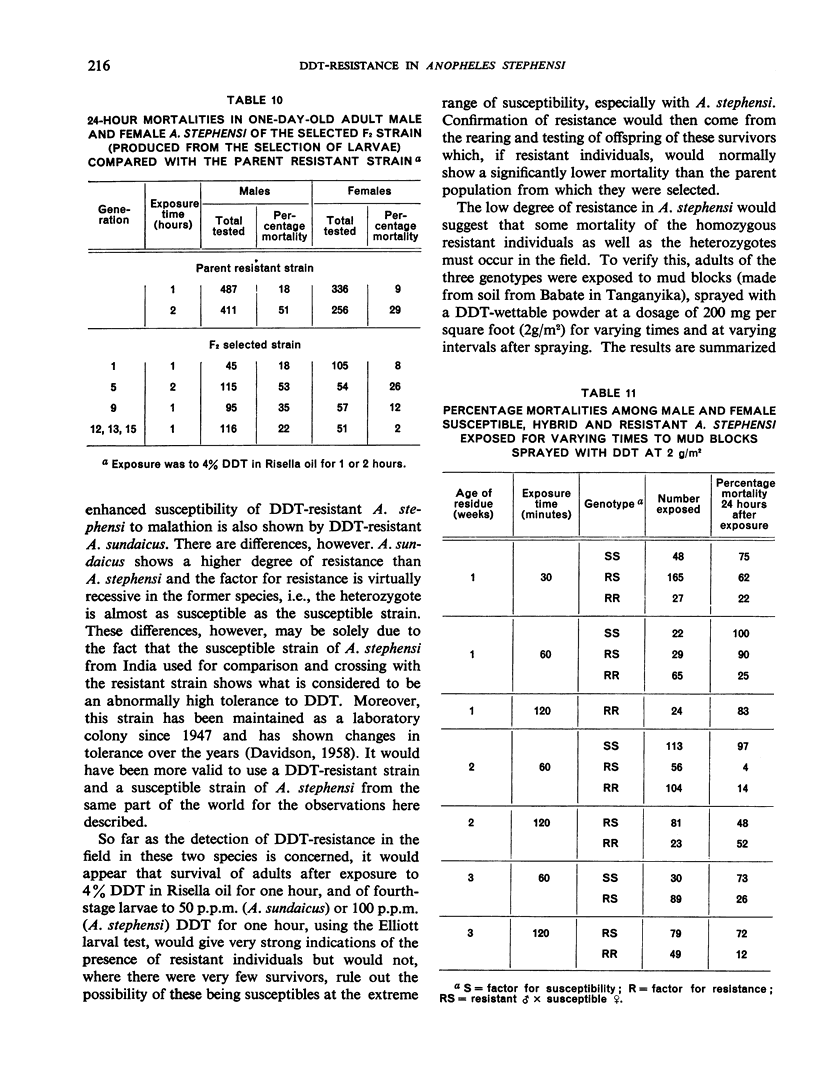
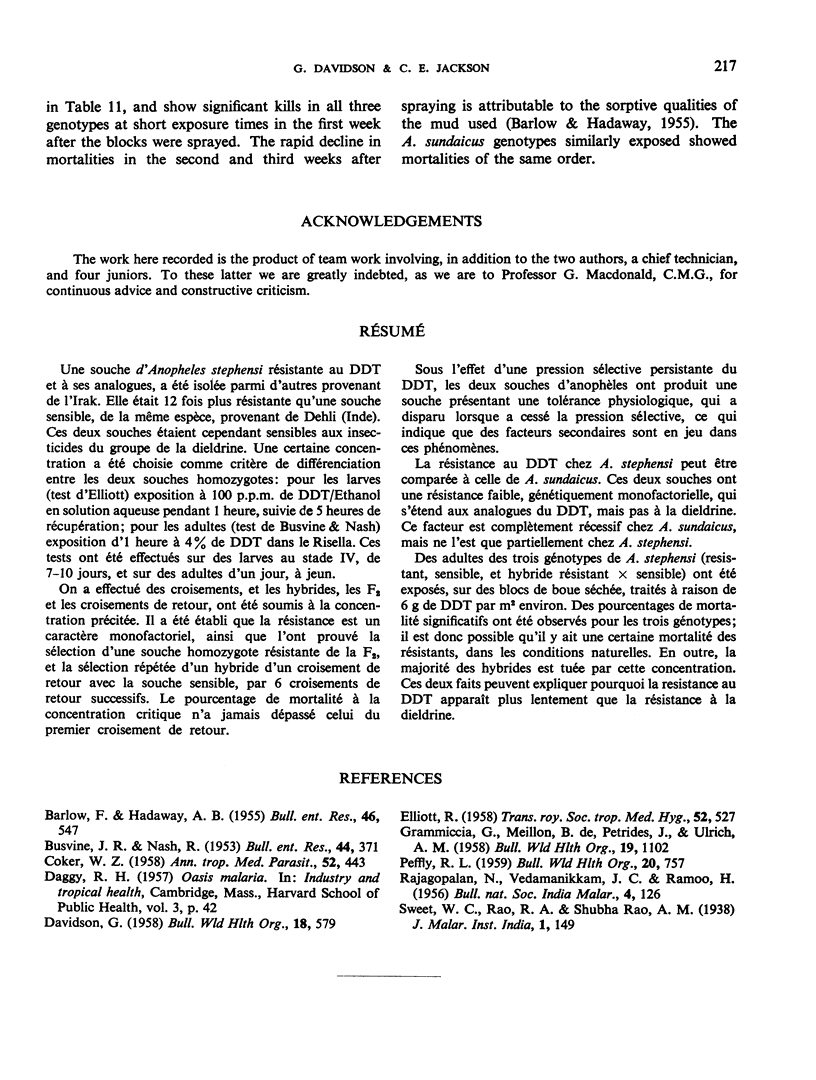
Selected References
These references are in PubMed. This may not be the complete list of references from this article.
- COKER W. Z. The inheritance of DDT resistance in Aëdes aegypti. Ann Trop Med Parasitol. 1958 Dec;52(4):443–455. doi: 10.1080/00034983.1958.11685883. [DOI] [PubMed] [Google Scholar]
- ELLIOTT R. A method for the investigation of susceptibility to insecticides in Anopheles larvae. Trans R Soc Trop Med Hyg. 1958 Nov;52(6):527–534. doi: 10.1016/0035-9203(58)90102-0. [DOI] [PubMed] [Google Scholar]
- PEFFLY R. L. Insecticide resistance in anophelines in eastern Saudi Arabia. Bull World Health Organ. 1959;20:757–776. [PMC free article] [PubMed] [Google Scholar]


